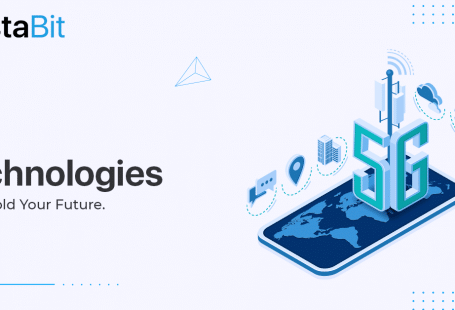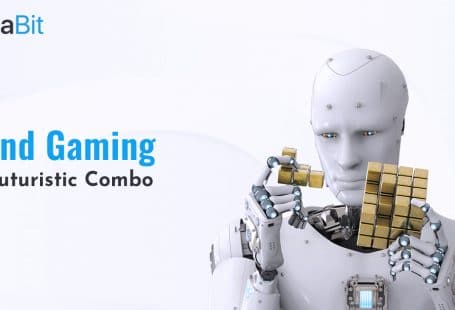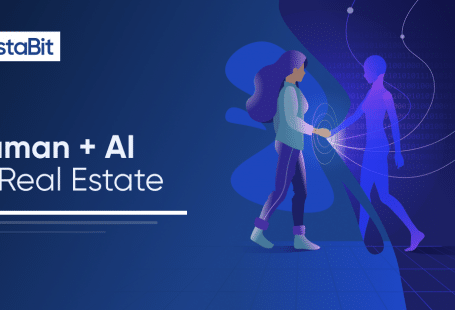“53% of organizations have headed up to scale AI projects in producing quality software development,” states the latest report of Capgemini Research Institute. Artificial intelligence(AI) is transforming various economic sectors and impacting our daily lives’ crucial aspects. Workplaces in healthcare, finance, retail, education, and technology leverage AI in software testing, automating data to reduce costs and make data-driven decisions.
AI significantly helps in improving business practices by planning inventory, optimising products, logistics, and providing features like chatbots, real-time applications, etc. Although AI is popular for many reasons, it is currently trending in software testing. Simply, because of the unignorable benefits several product owners worldwide have received through AI integration in their development process.
Before we move ahead, it is important to understand how Artificial Intelligence, with its capabilities to “think, learn, and implement” has evolved to answer all software testing problems.
Following are the highlights of this article:
- AI in Software Testing- An Overview
- The Current State of AI in Software Testing
- Benefits of Incorporating AI in Software Testing
- Future of Test Automation With AIST
- Preparations for Future
AI in Software Testing – An Overview
The motive behind using Al in software testing is to make testing smarter and more effective. Artificial Intelligence and Machine Learning (ML) apply problem-solving and reasoning to automate and enhance testing. Al in Software testing helps decrease time-consuming manual testing, so your team can focus on more crucial tasks, like building new innovative features.
As AI continues to pervade our world, it is becoming more significant with time to validate that such systems are safe, functional, secure, resilient, available, and performant. Sadly there are very few advances that can be seen in the area of testing AI-based systems.
Mammoth-ai’s latest report states that, since 2014, the number of vendors offering quality AI-driven test automation services has increased immensely. Most of these vendors are startup companies aiming for system-level testing of mobile apps, and the subject is generating some significant buzz in the industry.
Hence, testing needs AI.

Although some crucial aspects of AI for Software Testing are still not receiving enough attention, in the last decade, we have seen it emerging as a discipline centralized at the intersection of various sectors:
- AI-driven testing: Building AI tools for testing software.
- Self-Testing Systems: Designing software with self-testing and self-healing capabilities.
- Testing AI systems: Come up with methods to test AI systems.
The Current State of AI in Software Testing
Nowadays, researchers perceive the potential for AI and ML to close the gap between human and machine-driven testing competence. According to the McKinsey Global Survey report for 2020-21, Most organizations are using AI for various services as a tool for generating value in terms of producing quality services and revenue.
Test Bots
The current state of the AI practice uses intelligent and autonomous agents known as “Test Bots” to automate practices like application discovery, test generation, modelling, and failure detection. A combination of ML methods is used to implement these test bots. These include but are not limited to:
- Neural networks;
- reinforcement learning;
- And decision-tree learning.
Types of AI-driven Testing
AI and ML allow the test bots to be robust and act under uncertain conditions, unlike the traditional test automation systems and frameworks. Some of the excellent examples of AI-driven testing approaches that have built over the past few years include:
- Visual Testing: Leveraging screen comparisons and image-based learning to test the feel and look of an app.
- Differential Testing: Carrying out the comparison between app versions overbuilds, classifying the differences, and learning from classification feedback.
- Self-healing Automation: For selecting an auto-correcting element in tests when the User Interface changes.
- Declarative Testing: Specifying the motive of the test in a domain-specific or natural language and letting the system decide how to conduct the test.

These AI-driven testing approaches will help you save time and money while producing quality websites and applications.
After understanding the current state of AI and several AI-driven testing approaches, let’s discuss its benefits over traditional testing.
Benefits of Incorporating AI in Software Testing
Swift Testing
Manual testing is usually slow, taking a toll on costs and resources. The advanced Code changes require new testing methods, and regression testing cycles exhaust quality assurance agents.
AI automates the testing processes, enabling continuous and precise testing at a quicker pace. Test automation simulates millions of virtual users, which would not be feasible in controlled app testing. Moreover, with AI tools, you can get the precise number of tests required to analyze the changed code.

Comprehensive Flexibility
Even the most accessible alterations in an application can result in testing failure in automated testing tools as traditional test scenarios consider a selector or a sole path. Thus, test approaches like this are somewhat rigid.
AI and Machine learning allow for a highly flexible test procedure, knowledge relationships between various documentation elements. Such systems can adjust them automatically to any modifications in real-time, being both flexible and reliable.
Efficient Defect Tracking
In traditional testing methods, practitioners have unnoticed the bugs for a long time. Later, these ignored bugs become a huge problem. Artificial Intelligence in software testing analyses these errors and can catch defects in a few moments. As test data emerges, so do the bugs count.
Al automates test processes, so codes are corrected automatically, and tracking of bugs is assigned to QA professionals. AI takes impressions of failures on debugging reports and identifies duplicate defects.
Script Automation
While using AI for software testing, there is no requirement of automating a test script, as it is executed by the AI algorithm automatically. AI classifies the log files and makes test cases more balanced to remain brittle when locators are altered. With AI, the test scripts become capable of self-learning. AI can analyze the page load behaviour and receive mock responses from the server.
Improved Testing Scope
AI improves the number and scope of tests. With ML, AI tools enable spidering to write the tests automatically. These tools have advanced features that can crawl the app to collect crucial data.
This data is used to enhance the ML model of the app. The ML model compares the outcomes with expected app designs and raises flags if any deviation is observed. AI can also analyze test coverage to notify about risk-prone sectors with less coverage.
Visual UI Testing
AI helps in validating the visuality of the web pages. It can test different contents on the UI. As these tests are hard to automate, they usually require human efforts for judging the layout. However, with visualization tools based on Machine Learning, differences in images are spotted in such a way that it would become impossible for humans to pinpoint.
AI tools can help measure load time, take screenshots, and so on. AI testing saves your manual effort for building a framework, updating the Document Object Model (DOM), and profiling risks.
Evolving Bots
AI bots evolve with code modifications, learning comprehensive app functions. Whenever AI discovers any alteration in the code, it checks whether it’s new functionality. As tests are conducted, AI algorithms constantly undergo updates. This consequently results in evolving AI bots, and along with it, the quality of the product improves.
Launch in Small Timelines
Automated tests help you in shortening the development and test timelines. In test automation, a test gets executed after each source code modification. It reduces any extra cost involved in operating recurring test cases. An integrated software test proves to be time-saving and accurate. In the software test industry and QA, money is directly proportional to time.
Future of Test Automation With AIST
The use of AI for software testing is one of the most admiring trends that came this past decade and is expected to continue for enhancing existing tools and frameworks that aim at specific testing issues. Visual testing of UIs, functional testing of web and mobile apps, and UI element location and auto-correcting element selectors are some of the examples at this time.

Beyond this, we should expect to see AI starting to replace technology stacks completely for automated testing.
At almost every testing level, AI will soon take over automation tasks that need decisions that a wise human could make in less than a moment. Initially, superior order testing tasks may still need human intervention.
Such crucial tasks like usability testing, security testing, test generation, and edge cases require a bit more thought. However, over time as technology grows and the machines are trained on the actions of these superior-order tasks, AI is likely to take over those functions and tackle issues that require deeper context.
Preparations for Future
Testers and researchers are preparing themselves for some advanced designing and developing AI-driven systems for a future of test automation with AI. But how should you prepare yourself and your products for this?
Being a product owner, you have to check whether you are using AI systems built by engineers who understand AI and ML. Famous universities around the world are offering free introductory courses on machine learning and artificial intelligence.

For your help, vendors are likely to provide intuitive APIs and interfaces for using AI-driven testing features and customizing pre-planned AI models.
This impressive trend is already being followed with the advantages of AI tools and platforms like H20.ai, Google’s AutoML Vision, and DataRobot.
Wrapping Up
AI is already changing the landscape of testing. And while we are not completely aware of the future of software testing, we can prepare for it by scaling and stabilizing test automation to mature our processes. Artificial Intelligence in software testing will bring more and more benefits in the future for individual product owners and businesses as well.







